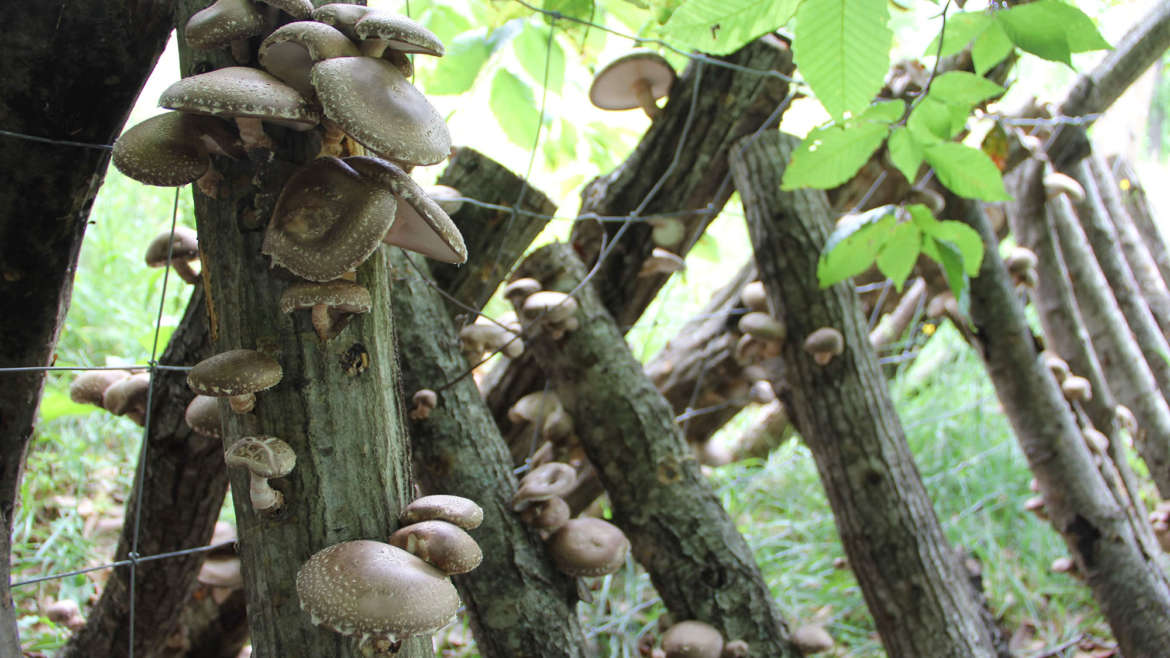Shiitake means ‘mushroom of the oak’ in Japanese. On our farm, we only grow shiitake using the traditional method pioneered in Japan centuries ago. The flavor, vigor, and nutrition on the harvested mushrooms are reason enough to undertake such a labor intensive process. By contrast, commercially grown shiitake that you find in the grocery store are grown in artificial environments, under flourescent lights in a warehouse. We inoculate white oak, red oak and ironwood with shiitake spawn in the winter by drilling holes in regular patterns, inject sawdust containing spawn, and cover the sawdust with melted cheese wax. For the next six months to a year, the mushroom mycelium spreads until the log is completely colonized. The mycelium sends out mushrooms in order to reproduce, as it thinks it has reached the end of a food source. A log will last between 3-5 years, depending on the diameter and type of wood.
In a natural setting, a log containing shiitake spawn will fruit if the fungi thinks its food source is in danger of dying. If a large storm rolls through and breaks off a limb, dropping it to the ground, the mycelium will quickly send out mushrooms to spread spores. We mimic this process in a commercial setting to encourage fruiting, specifically by soaking logs (the rainstorm) and knocking the soaked logs against the ground (limb falling out of a tree).
Terms to know:
Pin: When a mushroom first emerges on a log, it is called a pin maybe because it looks like the head of a pin. If the pin gets soaked in the tub or exposed to freezing temperatures, it will not mature into a full mushroom.
Flushing: When logs send out dozens of pins. This term is typically used for natural flushes, when a stack pins without being soaked, such as after a rainstorm.
Fruiting: Describes logs covered in pins or fully-formed mushrooms.
Inoculant: Growing medium (like sawdust) that contains mycelium or spawn of a particular strain of fungus. Inoculant is used to inoculate another growing medium, in our case oak or ironwood logs.
Strain: Different strains (like a variety of a vegetable crop, e.g. butternut versus acorn squash) have been identified and cultivated to perform in different environments and temperatures. We have winter, wide range, and warm weather strains, with different strains within those categories (e.g. Night Velvet).


